
Acer Chromebook 13 review: Announced May 2018, on sale Jan 2019. Can it still be a serious contender?
This review feels quite odd because it’s of a Chrome OS laptop that was unveiled waaay back in May 2018, and yet has only just begun shipping. In fact, I’m not even entirely sure that it has actually begun shipping at the time of publishing my review….!
What’s more, the model I was actually most keen to check out (the convertible Spin 13 variant) is only just showing up on Acer’s own website in one configuration – the £999.99 i7 model. Although you can get a discount if you hurry over and use a promo code to get 12% off.
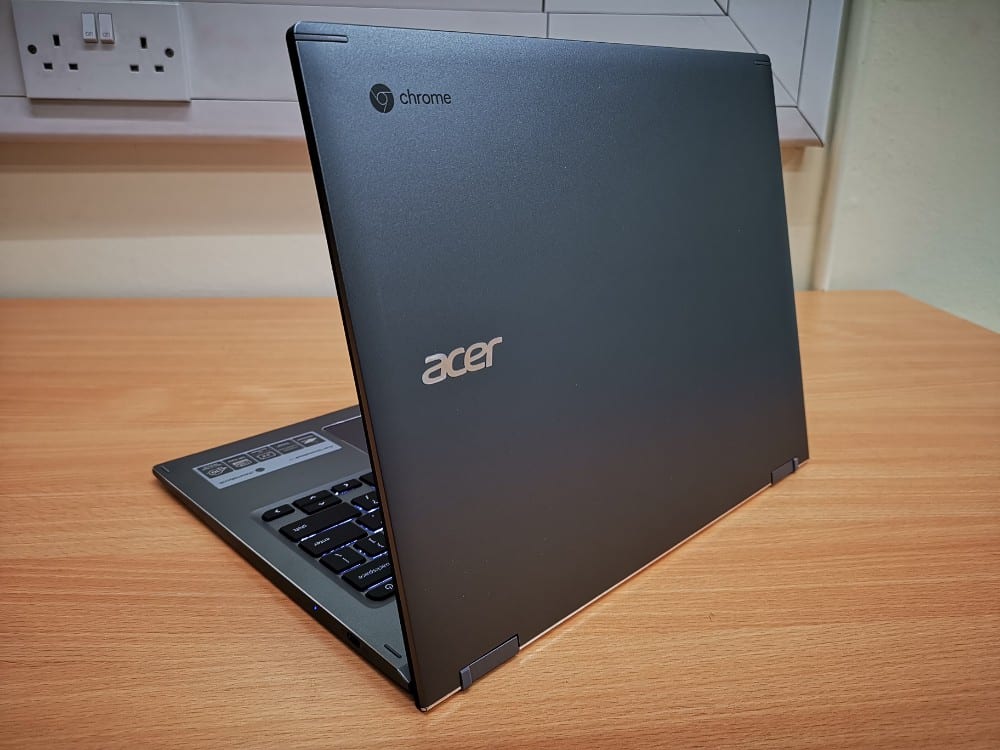
The Acer Chromebook 13 has been such a long time coming, you could have almost given up hope by now.
There’s a good chance that with CES kicking off in Las Vegas, we’ll have all-new Chromebooks announced – perhaps even by Acer itself – before anyone can easily buy one of these Acer Chromebooks in their preferred configuration.
The Chromebook 13 and Spin 13 models are very similar, with the key difference being the lack of a touchscreen on the non Spin model. The Spin 13 is also the convertible model, allowing it to be flipped over into tent mode or folded over to be used as a tablet. It even comes with a Wacom stylus pen, which can be stowed away inside.
All of this comes with a price premium of around £100. Apparently, given the current lack of pricing to make specific price comparisons.
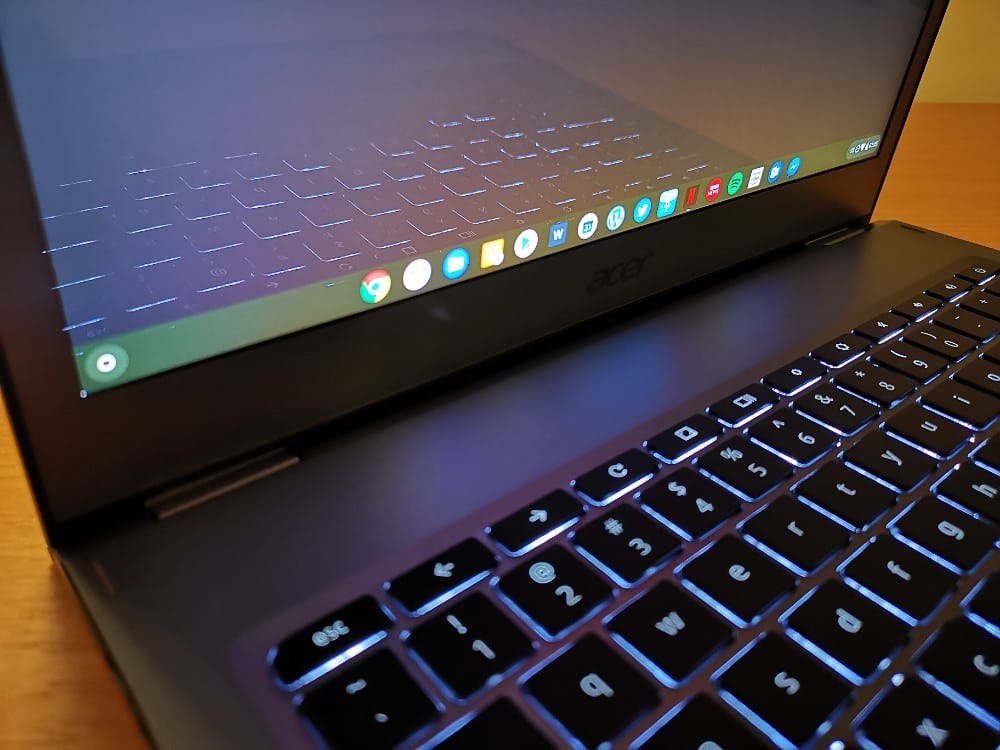
But, sadly, this isn’t the Spin 13 review. And taking the touchscreen out of the Chromebook 13 is a bizarre omission. With a retail price given to me by Acer that starts at £499 depending on the spec, you’d realistically assume it would be touchscreen as standard. Not an optional extra; standard.
A non-touch display renders a lot of Android applications near useless, as well as taking away some nice UI features of Chrome OS. It simply makes no sense on anything but budget, entry-level, Chromebooks.
For many potential customers this is going to be a total deal-breaker, but I decided to press on with a review because it could at least give me an insight into what the Spin 13 version would likely be like.
And in that regard, there proved to be a lot to like.
Acer has done a fantastic design job, making the device feel a lot more sturdy and professional looking than my two-year old R13 (a device that I should point out still runs very well, particularly when it comes to Android apps thanks to its ARM CPU, and has at least 3-4 more years of Google OS support to look forward to).
The thing I miss is not having a backlit keyboard, and a slightly spongey keyboard that sinks down in the middle. But it cost just £350 at the time, so has proved to be an excellent investment.

The Chromebook 13 is rock solid and now has the backlit keyboard, and is all the better for it.
One reason to upgrade from an existing Chromebook that likely still runs well is that Linux is now going to be a thing on Chromebooks (even if the setup process today is rather clunky, involving command line interface instructions to set up).
My Chromebook 13 offered the ability to enable Linux support in the stable channel, and in the future there’s even talk of allowing dual-booting of Windows 10. For that, you may wish to get a machine with more RAM and CPU grunt.

The Chromebook 13 also increases the screen resolution of my old R13 from 1920×1080 to 2256×1504 pixels (changing the aspect ratio from 16:9 to 3:2 in the process).
It’s not as high as something like Google’s Pixel Slate (3000×2000 pixels), but you’ll struggle to ‘see’ the pixels, and Acer seems to have found an excellent middle-ground between seeing the pixels, or putting the GPU under unnecessary load to render extra pixels for no appreciable gain.
I was hoping for an Intel i3 or i5 powered model and was quite surprised to be sent a Intel Celeron 3865U powered version, with 4GB of RAM and 32GB eMMC storage – which I didn’t even know was an available configuration. Acer had informed me that it would be selling an i3 and i5 model in the UK, with prices starting at £499.

So, is this going to be an even cheaper model or was it a late change of inventory for the UK that happened after review units went out?
As it turned out, having a supposedly low-spec CPU may have been a blessing in disguise. Why? Because the Celeron CPU never skipped a beat and offered an excellent level of performance all the time.
I soon started to wonder when I’d need anything more powerful because it just handled everything so well and with total ease.
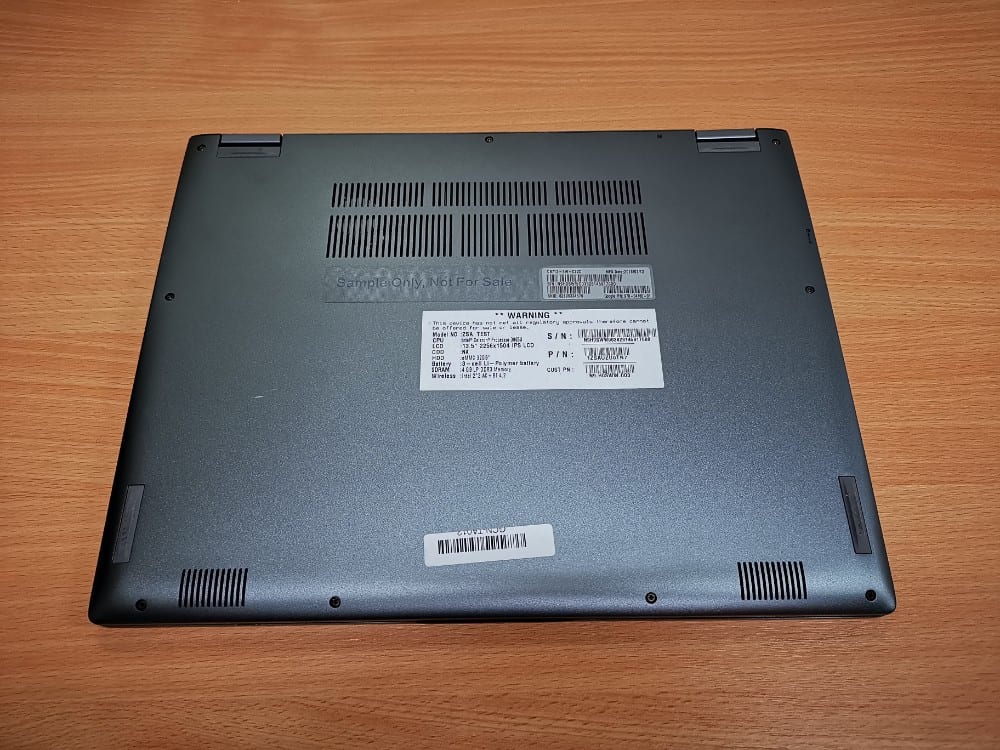
It clearly comes back to the possibility of Windows 10 support to come, or to run powerful Linux apps (yet I did try dabbling with GIMP on Linux to edit photos and even that was fast), but the experience of this chipset has made me reconsider my needs.
While the Celeron performed admirably and way better than I ever imagined, I think I’d still stump up a little more for some future proofing with the i3 version, whereas before my review I’d have likely opted for i5.
i7 still feels as overkill as I always thought, and now perhaps even more so.

My reason to use Chrome OS is down to the speed of the OS, and the battery performance, so even if I could run Windows 10 from tomorrow, I wouldn’t be doing so on a regular basis. It would take away all the benefits that converted me to using a Chromebook in the first place.
Plus, if I needed Windows 10 regularly then I’d be better off with a dedicated Windows machine. There are plenty of models to choose from to suit all tastes – and budgets. Acer make plenty themselves.
These days Windows 10 can run perfectly well on an i3 CPU anyway, so it’s there’s any other concern it will be the amount of RAM. 4GB on my review model is probably too little for a 2018/2019 Chromebook, and 32GB of storage is also quite miserly.

Chrome OS might cope with less RAM, but for Windows you’d probably want at least 8GB.
For the purpose of my review, I got along fine with just 4GB of RAM. Plus I was never going to fill up the internal storage in such a short space of time. Plus you have a microSDXC card slot to allow you to cheaply add loads of extra storage – up to 512GB more if you need.
In fact, the Chromebook 13 is excellent when it comes to connectivity, with two USB-C ports (one each side), a USB 3.0 Type-A port, the already mentioned memory card slot, plus a headset socket. It also has 802.11ac Wi-Fi and Bluetooth 4.2 support. Sadly no LTE/4G enabled version exists for this or the Spin 13 models.
The HDMI output from the earlier R13 is also missing now, with extra screen outputs necessary now via the USB-C connectors.
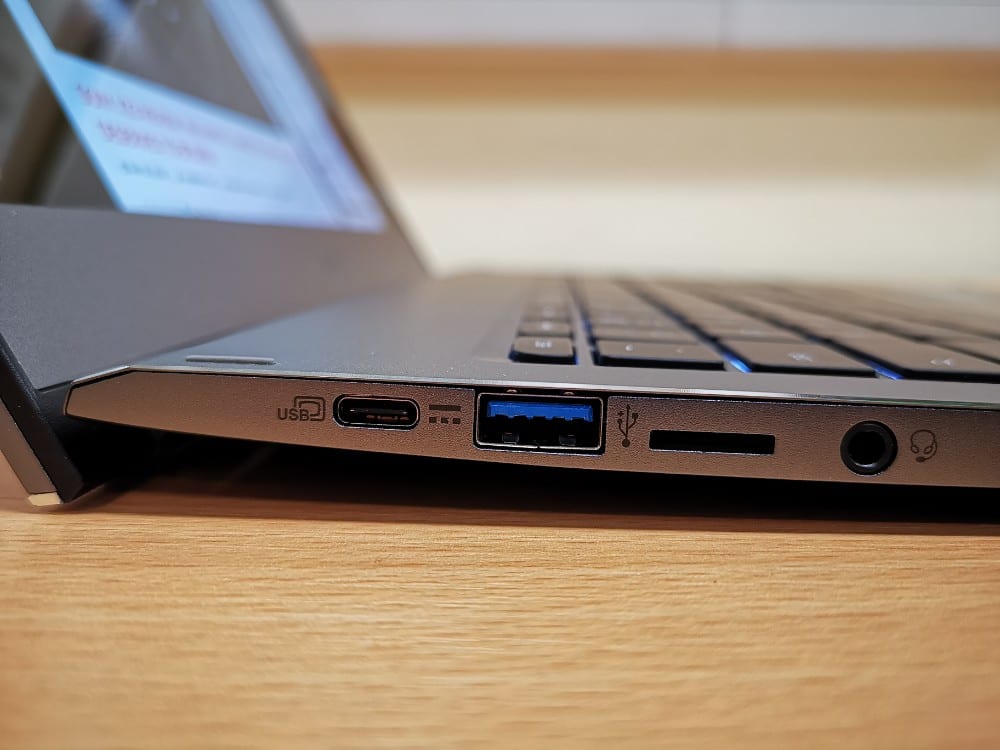
I should also add that once taken out of the box, setup was as quick and easy as I hoped it would be. As with other Chrome OS devices, once logged in I was able to sit back and wait 10-15 minutes for all my apps, wallpapers and taskbar icons to populate automatically.
This, again, is why I favour Chromebooks over anything else these days. It suits my personal needs the best, and increasingly others are coming around to the benefits. Your mileage may vary, but you’re probably not reading this review at all if you haven’t got at least some interest.
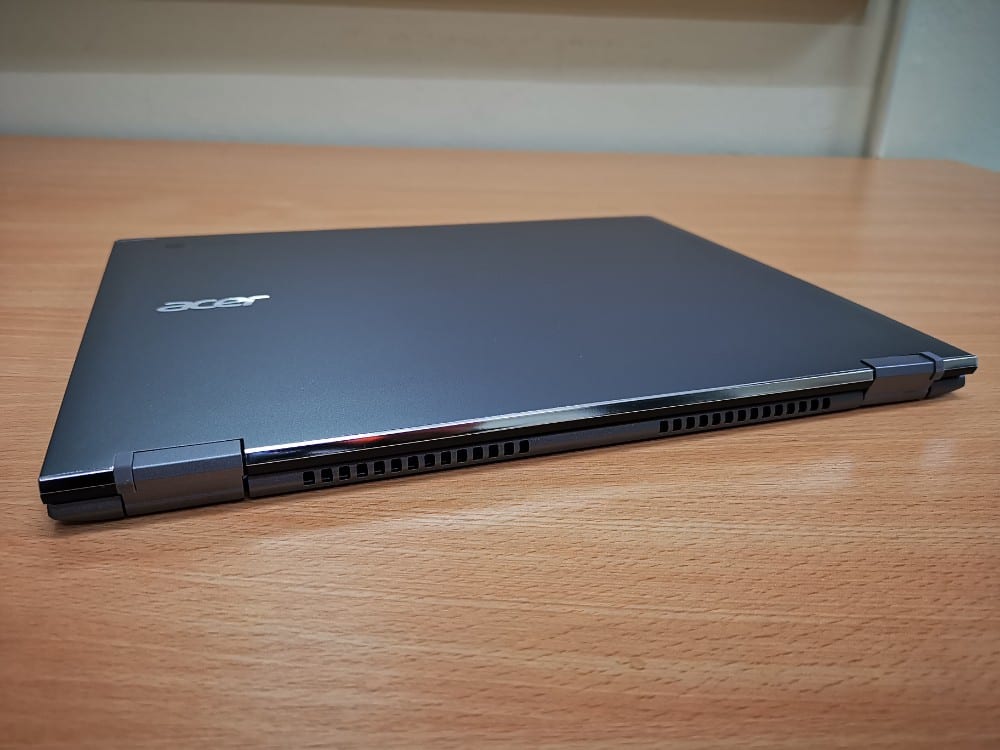
Conclusion
The Celeron-powered Chromebook 13 has proved to be an eye-opener for me. I expected to be let down by such a supposedly low-end chipset, but it turned out to be ample for my needs.
Secondly, the backlit keyboard would make it far easier to take notes at a dimly lit press event, without having to rely on the illumination from the screen.
The screen is crisp, bright and perhaps the perfect resolution. With the recent scaling options available on Chrome OS, you can now adjust the size of menus, icons and dialogues to find the perfect balance. If your eyesight is good enough, you can cram an incredible amount of things on the display.
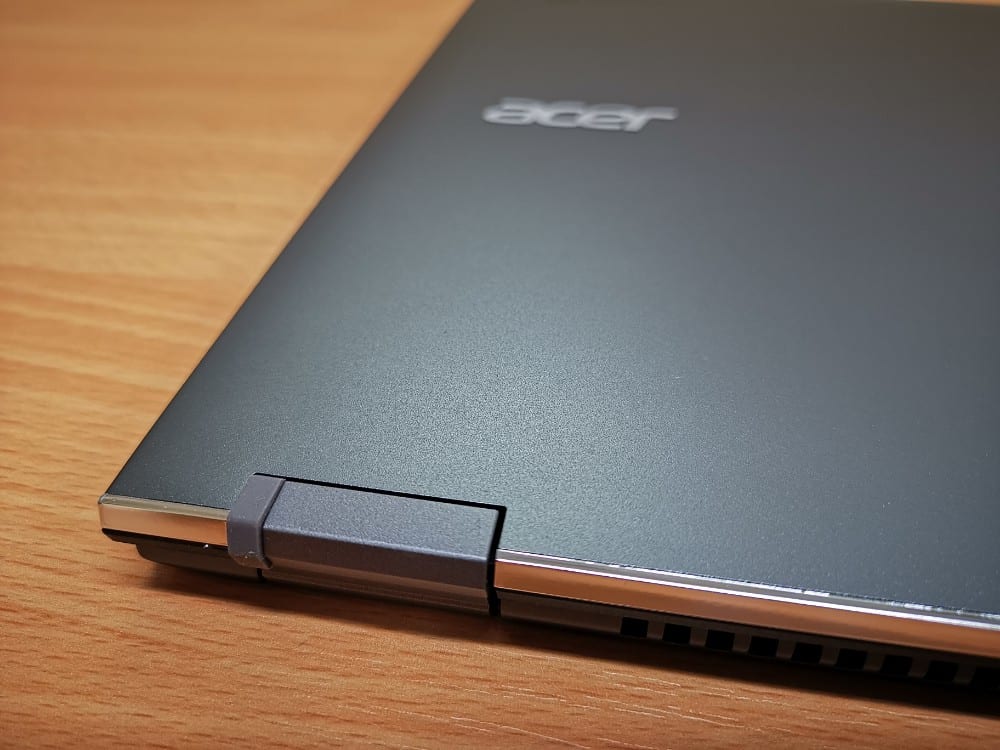
The battery performance appeared as likely to reach 10 hours as my trusty old Acer R13, and it all came in a package that felt better balanced in the hand, as well as looking a lot better thanks to its all-metal chassis.
The problem is that lack of a touchscreen, which is inexcusable in my opinion. It makes the Spin 13 the only version I could ever consider buying myself, even though I don’t really have a need for the pen or using the Spin 13 in tablet (or tent) modes.
I have used my R13 in tablet mode exactly two times in almost two years.
If the screen had been touch-enabled, the Chromebook 13 would be my favoured choice.
Maybe Acer has done its research and knows how many people don’t ever need or use a touchscreen, and while I may not touch the display all the time, I still want to be able to do so when necessary.

At the time of posting my review, it’s not clear what the availability of the Chromebook 13 will be. This needs to be fixed, and fast. It has been around eight months since these products were announced and competition is getting fierce in the mid to high-end Chromebook market now, thanks to not only Acer, but the likes of Dell, HP, Samsung, Asus and of course, Google.
My recommendation would be still be the Spin 13. But what I took away with my short time with the Chromebook 13 is that you don’t need to shell out for an i5 or i7 powered Chromebook, unless you have a desire to run Windows on it for video editing or gaming. Two things the i7 will let you do faster, but really isn’t likely to be needed by most users.
So how about it Acer? How about ditching the £999.99 i7 model from your website and coming up with some cheaper options of both the Chromebook 13 and Spin 13?
Oh, and next time please don’t sell any Chromebook for more than £400 without a touchscreen? Or keep us waiting over half a year. Thank you!
Good Points
Solid build quality
Strong keyboard and trackpad
Bright, crisp, display
Excellent battery life
Strong CPU performance
Bad Points
Lack of touchscreen
4GB RAM may hinder future usage
32GB storage too restrictive
Pricing/availability too confusing
